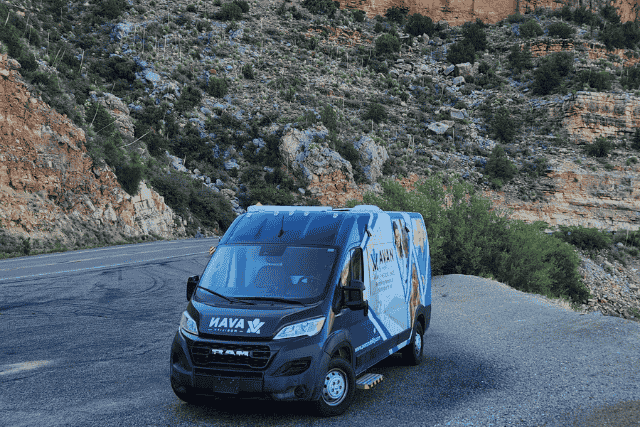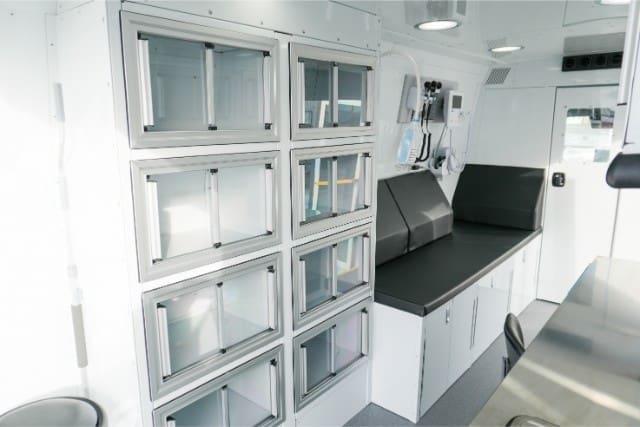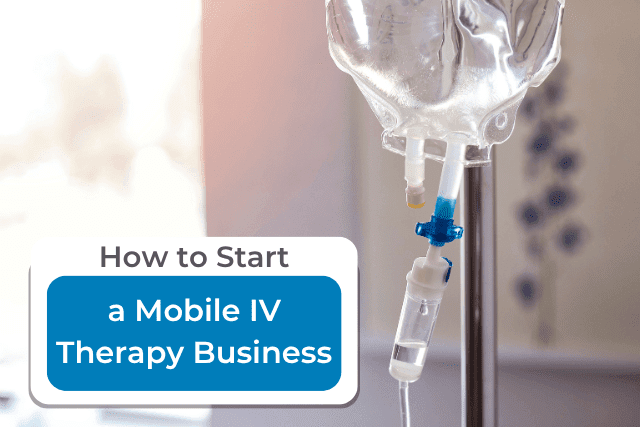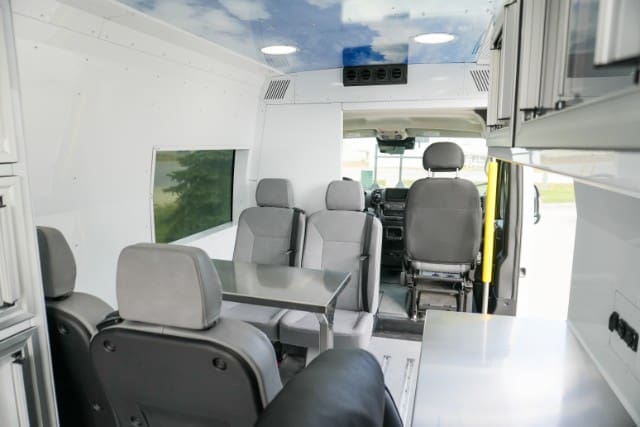Did you know some New Mexico residents drive over 60 miles just to see a doctor? For rural New Mexico patients, getting basic healthcare can feel like a full-day adventure. Imagine needing dialysis three times a week, packing up for hours on the road each trip.
It’s exhausting, stressful, and sometimes risky. Skipping appointments can hurt your health, but long travel makes it hard to keep up. What if healthcare could come to your town instead of the other way around? That’s exactly what mobile medical vans can do.
For the past decade, AVAN Mobility has been working with healthcare networks like yours and the Community Clinic of Southwest Missouri across the U.S., bringing care closer to the people who need it. We’ve seen the difference mobile medical units make, and we stick around after delivery to support teams. We’re not the only option, but we focus on solutions that fit your mission and your patients’ needs.
In this article, you’ll learn how mobile medical vans can cut travel for rural New Mexico patients and how they do it.
7 ways how mobile medical vans can cut travel for rural New Mexico patients
Getting to a doctor can feel like a road trip for rural New Mexico communities. Some patients aren’t just five minutes from a hospital; they’re an hour or more away just for a basic checkup. For patients with chronic conditions like diabetes or those needing dialysis, it’s easy to skip a visit or two. That can worsen their health, creating bigger challenges for the healthcare team. Mobile medical vans help by bringing care closer to where patients live.
1. Mobile medical units reduce long drives
Some rural New Mexico patients are driving to the doctor just for a basic checkup, and over time, those long trips can feel like a huge chore. Patients can get tired, stressed, or even put off appointments, which impacts their health and treatment outcomes.
Here’s how mobile medical units help your patients:
- Shorter trips: Vans park in nearby towns or neighborhoods, cutting travel time.
- Better chronic care access: Wound care, routine checkups, and labs happen closer to home.
- Less stress for patients and families: Patients avoid long drives, and caregivers save time.
- More reach for healthcare teams: Teams can see more patients across multiple locations.
These mobile medical vans act as mini-clinics on wheels. They carry everything from vaccines to portable lab equipment. For healthcare teams, that means patients get care without exhausting travel, and teams can support more people in a day.
2. Mobile clinics reach patients who avoid care
Have you ever put off a medical appointment in the past? Some patients in rural New Mexico skip appointments not because they forget, but because getting to care is hard or stressful. Picture a small town like Cimarron, New Mexico. The local clinic is tiny, and the nearest hospital is over 60 miles away. For patients with chronic conditions, new parents, or older adults, that drive can feel like a big, exhausting chore.
Mobile clinics help by meeting patients where they already are. A van can park at the local diner, community center, or library. Patients can get vaccines, checkups, or screenings while doing everyday errands. It makes healthcare feel easy instead of intimidating.
Why mobile clinics make a difference:
- Care in familiar spots: Patients don’t have to leave town or rearrange their whole day.
- Less stress: Being in a place they know makes appointments feel simpler.
- More preventative care: Patients are more likely to come in for checkups and screenings.
- Healthcare teams reach more people: Patients who might skip care now get seen.
Imagine a mobile health unit parked outside Cimarron’s grocery store. A mom can get her kids vaccinated while picking up milk. An older adult can check their blood pressure at the same stop. Patients get care without long drives, families save time, and healthcare teams reach more people.
Mobile clinics bring care closer, make it easier, and help patients stay healthy. They turn scary, stressful appointments into simple stops that fit into real life.
3. Mobile medical vans help patients save time and money
For rural New Mexico patients, getting healthcare can be a serious time drain. Some families spend hours driving just for a routine checkup, missing work, school, or other errands. Over time, those trips add up in both time and money. For patients with ongoing treatments, like dialysis or chronic care, the burden can be exhausting.
Mobile medical vans help reduce these pressures. Instead of asking patients to travel long distances, healthcare teams can bring services to local towns, community centers, or even workplaces. Patients get the care they need without rearranging their entire day.
Here’s how mobile medical vans make life easier:
- Save hours on travel: Patients can visit the mobile clinic nearby instead of driving for miles.
- Cut transportation costs: Less money spent on gas and vehicle wear-and-tear.
- Keep patients on schedule: Easier access means fewer missed appointments and better health outcomes.
- Support families: Caregivers don’t have to plan whole days around appointments.
Imagine a mobile medical van visiting a town like Clovis, New Mexico. A patient needing routine bloodwork can stop by on the way home from work. A parent can get their child’s checkup done while running errands. Everyone saves time and energy, and the healthcare team can reach more patients in a single day.
Mobile medical vans make healthcare more practical for patients and teams alike. They reduce the hassle, save resources, and help keep patients on track with their care without long drives or wasted hours.
4. Mobile medical vans reduce accessibility challenges
Some patients in rural New Mexico deal with physical barriers that make getting care even harder. Imagine a patient who uses a wheelchair or has trouble walking. Even if the nearest clinic is nearby, stairs, narrow doorways, or crowded waiting rooms can make visits stressful or impossible.
Mobile medical vans solve this problem by bringing accessible care directly to the patient. Vans can be equipped with ramps or lifts, wide doors, and roomy interiors that make it easier for patients with mobility challenges to enter and receive care comfortably.
Here’s how mobile medical vans improve accessibility:
- Wheelchair-friendly access: Ramps or lifts let patients enter safely without extra help.
- Spacious interiors: Teams can move around easily to provide care without crowding.
- Inclusive care: Patients with mobility challenges get the same high-quality service as everyone else.
- Better patient experience: Fewer barriers mean patients are more likely to keep appointments.
Picture a mobile health unit visiting a small town clinic day in Raton, New Mexico. A patient in a wheelchair can roll up using the van’s lift, get their routine checkup, and leave without the stress of navigating stairs or tight spaces. For healthcare teams, it’s easier to serve all patients efficiently, no matter their mobility needs.
Mobile medical vans make healthcare accessible for everyone, turning appointments into stress-free experiences. Patients get care without struggling with barriers, and healthcare teams can focus on providing treatment instead of managing obstacles.
5. Mobile clinics provide multiple services in one stop
Some patients in rural New Mexico face a real headache: they need several types of care, but that usually means multiple trips. Maybe a child needs a vaccination, a parent needs a blood pressure check, and an older adult needs routine labs. Each trip can take hours, and for families juggling work, school, and errands, it’s exhausting.
Mobile medical vans solve this by bringing multiple services together in one visit. Patients can get vaccines, labs, checkups, or screenings all at the same stop. This means fewer trips, less travel, and a simpler way for healthcare teams to reach more people.
Why multi-service mobile clinics help:
- Fewer trips: Patients get everything they need in one visit.
- Time and cost savings: Less driving, less time off work, less stress.
- Better patient follow-up: Patients are more likely to complete all recommended care.
- Efficient for healthcare teams: Teams can serve multiple needs at once, making each visit count.
Imagine a mobile medical van visiting Farmington, New Mexico. A parent can get their child’s vaccines, an adult can have a routine checkup, and an older family member can get lab work done in a single stop outside the local community center. Patients stay on track, families save time, and healthcare teams reach more people without extra trips.
Mobile medical vans make healthcare easier, faster, and more practical. Patients get the care they need without juggling multiple long drives, and healthcare teams can provide complete, efficient care to the community.
6. Mobile health units support seasonal and temporary needs
Some rural New Mexico communities only need certain healthcare services at specific times. Think about flu season, back-to-school physicals, or pop-up community events. Patients usually have to travel far for these short-term services, which can be inconvenient and easy to skip.
Mobile health units solve this by showing up exactly when and where the need is. Vans can park at schools, community centers, or public events for a day or a week. Patients can get care without rearranging their schedules or driving long distances.
Here’s why seasonal mobile clinics help:
- Quick access for temporary needs: Patients get care when it’s needed most.
- Reduces missed appointments: Easier access means more patients complete seasonal care like vaccines or screenings.
- Saves time and money: Patients don’t have to plan long trips for short-term services.
- Supports healthcare teams: Teams can reach multiple patients efficiently during busy seasons.
Picture a mobile medical van stopping at a small town like Las Vegas, New Mexico, during flu season. Families can get flu shots for kids and adults, and older adults can get routine checkups, all in a single visit while running errands. Patients stay on track, families save time, and healthcare teams reach more people efficiently.
7. Mobile clinics help patients without reliable transportation
In rural New Mexico, not every patient has a car parked in the driveway. Some families share one vehicle, and others rely on neighbors, friends, or rare bus routes. When a clinic is hours away, missing a ride can mean missing care altogether.
Mobile clinics make this challenge more straightforward to handle. Instead of asking patients to find a way to the hospital, the hospital comes to them. Vans can park in familiar spots like grocery store lots, tribal centers, or schools, putting healthcare within reach for patients who don’t have steady transportation.
What does this mean?
- Fewer missed visits: Patients can keep appointments without needing to plan rides weeks ahead.
- Equal access: Even patients without cars get the same chance to receive care.
- Less stress: Families don’t have to juggle work, kids, and borrowing a car.
- Community impact: Clinics can reach more people who would normally slip through the cracks.
Picture this: A mobile medical van rolls into Gallup, New Mexico and sets up outside a community center. A patient who doesn’t own a car walks a few blocks to get a diabetes checkup. Normally, this visit would mean finding a ride for a two-hour trip. But now, care is local, simple, and stress-free.
Mobile medical vans remove the roadblock of unreliable transportation. They bring the clinic closer, so patients don’t have to put their health on hold.
Curious about taking the next step toward better mobile healthcare solutions?
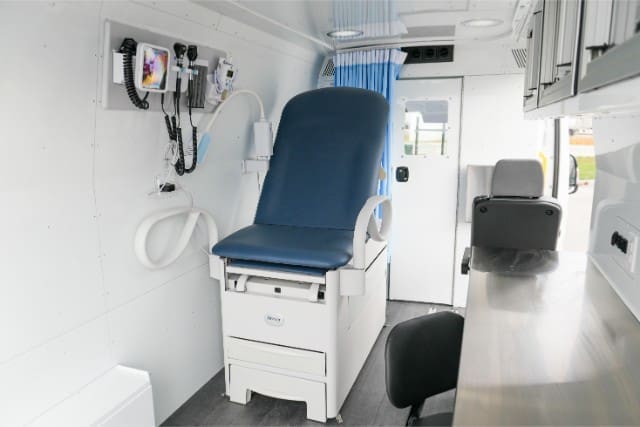
You came here looking for answers on how to solve healthcare gaps in New Mexico. Maybe your community is too far from hospitals, or maybe your organization struggles with limited clinic space. You wanted to know if mobile clinics could be the bridge between where you are now and the care your community needs.
Here’s what you learned today:
- Mobile medical vans can travel where traditional clinics can’t.
- They solve issues like distance, cost, and limited access in rural and underserved New Mexico areas.
- With the right partner, your organization can turn challenges into lasting solutions.
At AVAN Mobility, we help reshape access to healthcare across the U.S. Our team has worked with organizations nationwide to bring care to remote deserts, mountain towns, and tight-knit rural communities just like those in New Mexico. Every van we design is built to handle real-world challenges, from long highways to rugged terrain.
We believe healthcare should not stop at city limits, and we’re proud to help leaders like you carry care to the people who need it most. If you have questions, click the button below to talk to one of our mobility experts today.
If you’re not ready to talk with a mobility expert yet, that’s okay.
Here are three helpful articles you can read next to keep learning:
- 5 Types of Mobile Medical Vans: Learn about the different types of mobile medical vans you can get.
- Top 10 tips on fundraising for a Mobile Clinic Van: Discover smart ways to raise funds and get your project off the ground in New Mexico.
- How to choose a mobile medical van: A step-by-step guide to help you make the right decision before buying.
